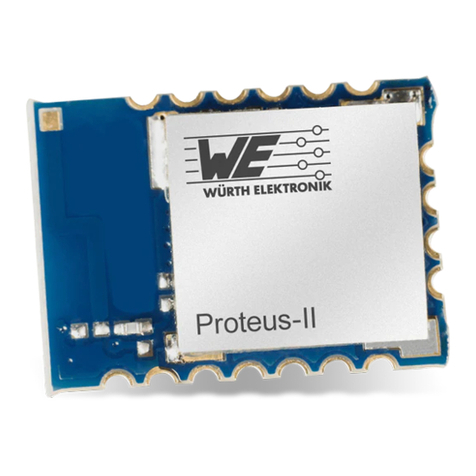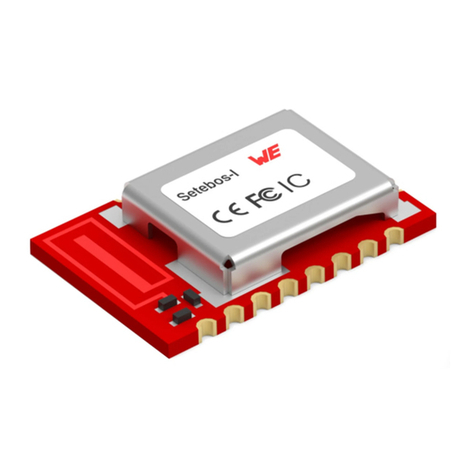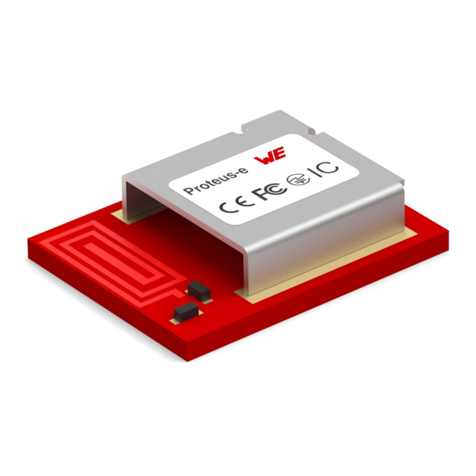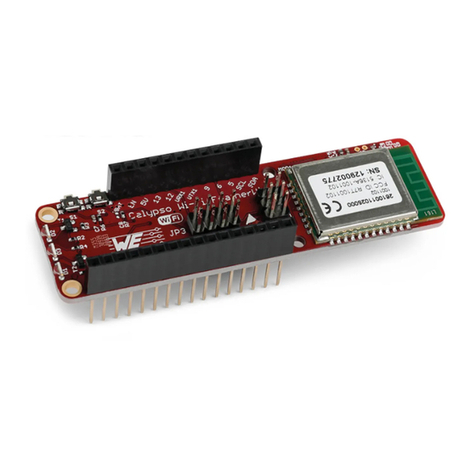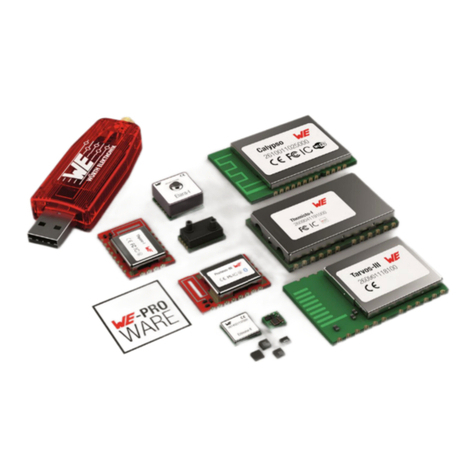
WIRELESS CONNECTIVITY & SENSORS
User manual Telesto-II
7.3. Modification of volatile parameters . . . . . . . . . . . . . . . . . . . . . . . . . 27
7.3.1. CMD_SET_MODE_REQ . . . . . . . . . . . . . . . . . . . . . . . . . . 28
7.3.2. CMD_SET_PAPOWER_REQ . . . . . . . . . . . . . . . . . . . . . . . 28
7.3.3. CMD_SET_DESTNETID_REQ . . . . . . . . . . . . . . . . . . . . . . 28
7.3.4. CMD_SET_DESTADDR_REQ . . . . . . . . . . . . . . . . . . . . . . . 29
7.4. Modification of non-volatile parameters . . . . . . . . . . . . . . . . . . . . . . . 29
7.4.1. CMD_SET_REQ .............................. 29
7.4.2. CMD_GET_REQ .............................. 31
7.4.3. CMD_FACTORY_RESET_REQ . . . . . . . . . . . . . . . . . . . . . . 31
8. UserSettings - Module configuration values 32
8.1. Difference between volatile and non-volatile settings . . . . . . . . . . . . . . . 32
8.2. Modifying the UserSettings . . . . . . . . . . . . . . . . . . . . . . . . . . . . . 32
8.3. UART_PktMode.................................... 35
8.3.1. Example1:.................................. 35
8.3.2. Example2:.................................. 35
8.4. UART_PktSize .................................... 37
8.4.1. Example1:.................................. 37
8.4.2. Example2:.................................. 37
8.5. UART_RTSLimit ................................... 38
8.5.1. Example1:.................................. 38
8.5.2. Example2:.................................. 38
8.6. UART_ETXChar ................................... 39
8.6.1. Example1:.................................. 39
8.6.2. Example2:.................................. 39
8.7. UART_Timeout.................................... 40
8.7.1. Example1:.................................. 40
8.7.2. Example2:.................................. 40
8.8. UART_DIDelay .................................... 41
8.8.1. Example1:.................................. 41
8.8.2. Example2:.................................. 41
8.9. MAC_NumRetrys................................... 42
8.9.1. Example1:.................................. 42
8.9.2. Example2:.................................. 42
8.10. MAC_AddrMode ................................... 43
8.10.1.Example1:.................................. 43
8.10.2.Example2:.................................. 44
8.11. MAC_DefaultDestNetID . . . . . . . . . . . . . . . . . . . . . . . . . . . . . . . 45
8.11.1.Example1:.................................. 45
8.11.2.Example2:.................................. 45
8.12. MAC_DefaultDestAddrLSB . . . . . . . . . . . . . . . . . . . . . . . . . . . . . 46
8.12.1.Example1:.................................. 46
8.12.2.Example2:.................................. 46
8.13. MAC_DefaultSourceNetID . . . . . . . . . . . . . . . . . . . . . . . . . . . . . . 47
8.13.1.Example1:.................................. 47
8.13.2.Example2:.................................. 47
8.14. MAC_DefaultSourceAddrLSB . . . . . . . . . . . . . . . . . . . . . . . . . . . . 48
8.14.1.Example1:.................................. 48
Order code 2607021191010 4
Version 2.4, May 2023 www.we-online.com/wcs

